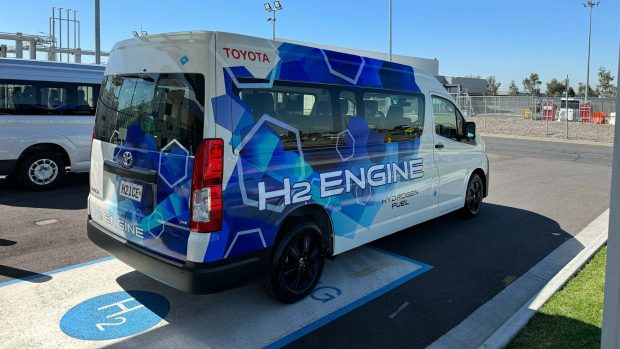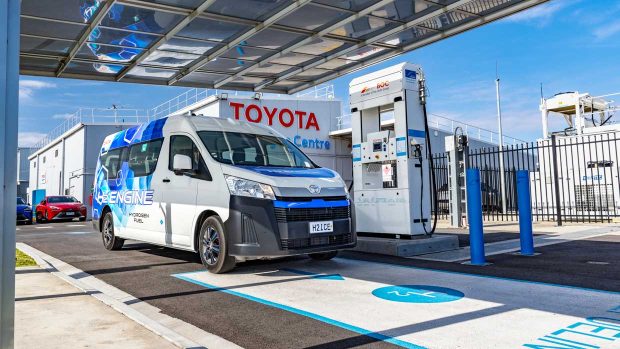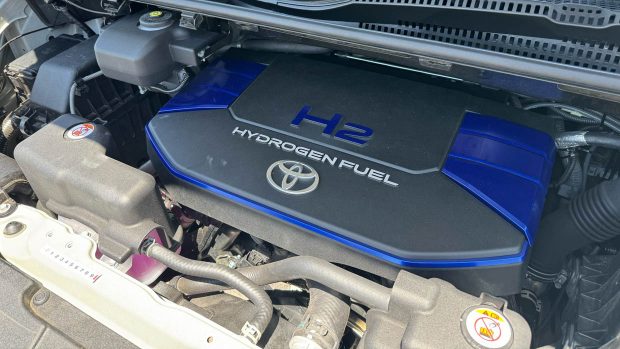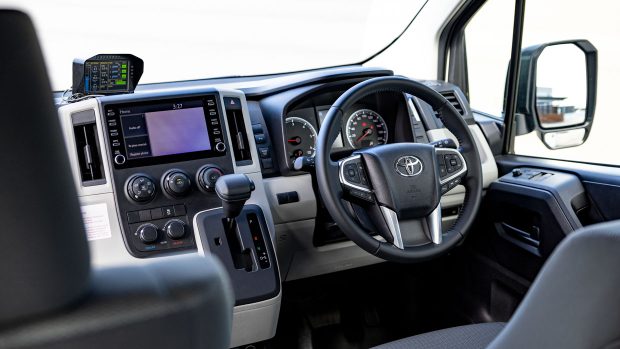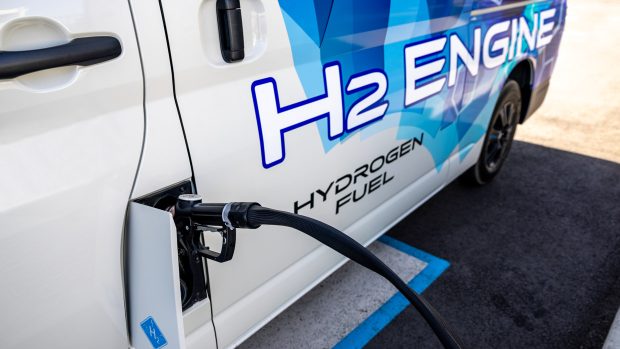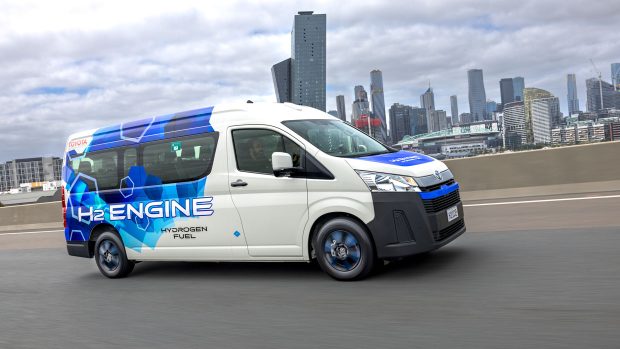-
Car Reviews
- Car News
-
Car Comparisons
Latest comparisons
- Chasing Deals
The automaker is set to begin customer testing of a newly prototyped hydrogen-powered internal combustion Hiace van
Toyota has unveiled the latest product in its ‘multipathway’ approach to decarbonisation – a Hiace van powered by a hydrogen-fuelled internal combustion engine (ICE).
The prototype – which is set to begin a customer pilot program locally this month as part of the next stage of its development – looks just like a regular Hiace inside and out.
It has a range of just under 200 kilometres, however the key advantage of the vehicle, like other hydrogen FCEVs is a much faster five-minute refuelling time, as opposed to the lengthier charge time for full battery powered EVs.
Importantly, the prototype differs from Toyota’s other hydrogen-powered cars like the Mirai sedan which are fuel cell electric vehicles (FCEV) that see hydrogen power an electric battery. In this situation, hydrogen is effectively used as fuel to power a traditional internal combustion engine which takes the place of a full EV battery.
The reveal comes at a time when Toyota leans into a diversified approach to reducing emissions, recently making its latest stride in the hydrogen space by signing a memorandum of understanding with other key brands to drive infrastructure development in Australia, and having also built a hydrogen fuel cell prototype of its Hilux ute in the UK.
So let’s take a look at what we know so far and where to from here for the prototype.
Familiar components in the prototype include its 3.5-litre twin-turbo V6 engine which is found in the Lexus LX600 in Australia and overseas variants of the Land Cruiser 300 Series. Toyota notes that the only change made to the engine is to its injectors, which allow it to run on compressed hydrogen gas instead of petrol.
The engine is also mated to the same 10-speed automatic transmission, also used in the Land Cruiser 300 and LX600, although power is sent to the rear wheels in the case of the hydrogen Hiace which delivers 120kW of power and 354Nm of torque.
With the engine and transmission borrowed from other Toyotas, the Hiace’s three hydrogen tanks are similar to Toyota’s fuel-cell electric Mirai sedan which can hold 5.6kg of hydrogen.
The automaker says there are almost zero carbon tailpipe emissions, however the ignition of hydrogen in the engine does amount to a small amount of nitrogen oxides. Despite this, Toyota says the vehicle meets Euro VI emissions standards.
The key advantages of the technology according to Toyota are the fast refuelling and also the ability for higher loading and towing capacity as compared to a BEV – five minutes and 1500kg in the case of the prototype.
In current prototype form, the hydrogen-fuelled ICE Hiace delivers just under 200km of range. While a different technology, this falls significantly short of the hydrogen fuel-cell electric Mirai’s range which is claimed at 650km, and which has also seen a significantly higher world record of 1340km.
However, Toyota notes that this is firmly a prototype – not a production-ready vehicle – which is still to undergo significant development. At launch, the automaker noted further potential development including enhancement of hydrogen storage, improvements to combustion, and potentially the addition of hybrid tech in future.
This said, the key challenge for hydrogen – a lack of infrastructure – will still remain, which is why we may see greater application potential for hydrogen tech like this in the commercial sphere, at least in any initial commercial application.
This said, Toyota has said there is the possibility we could see the tech adapted to other vehicles like the Land Cruiser, pointing to its adaptability being another key advantage.
With Toyota’s pilot program beginning imminently, we will see the prototype van used ‘in real-world conditions’ by selected Australian companies who will report back to Toyota on their experience, to aid the vehicle’s continued development.
Toyota has already named CPB Contractors as the first to take part in the pilot, using the hydrogen Hiace to transport workers for an infrastructure project.
The brand says it aims to bring hydrogen-fuelled internal combustion engine vehicles to full commercialisation and the pilot program will play a role in speeding this process up.
Latest news
About Chasing cars
Chasing Cars reviews are 100% independent.
Because we are powered by Budget Direct Insurance, we don’t receive advertising or sales revenue from car manufacturers.
We’re truly independent – giving you Australia’s best car reviews.
